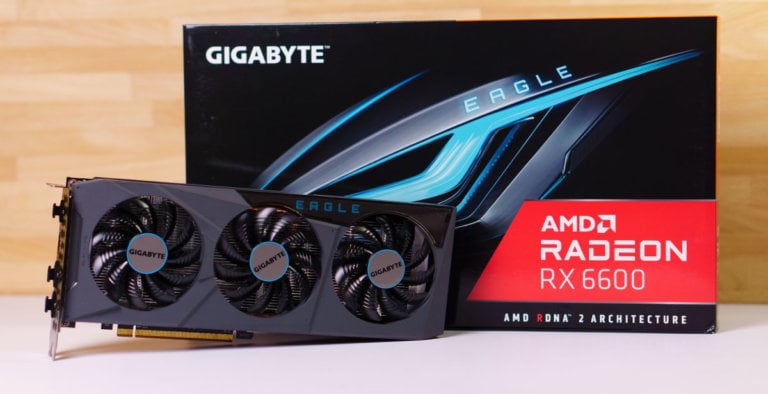
The AMD Radeon RX 6600 has finally launched, which aims to take some market share from the NVIDIA GeForce RTX 3060. It is essentially a slightly cut-down version of the RX 6600 XT that sports a lower TDP, less cores, has a lower asking price, but also focuses on the 1920 x 1080 market segment. There is no reference version so we will be taking a look at the Gigabyte Radeon RX 6600 Eagle.
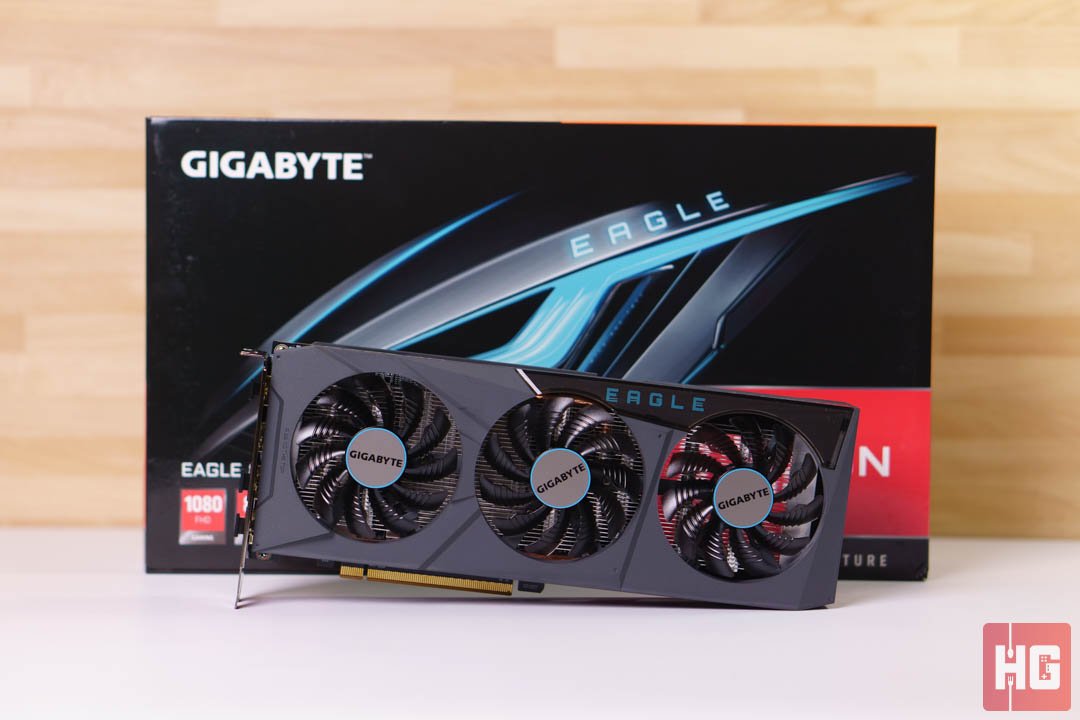
| GPU | Navi 23 |
| Architecture | RDNA2 |
| Manufacturing Process | 7nm TSMC |
| Clock Speeds | 2044MHz (Game Clock), Up to 2491MHz (Boost Clock) |
| Shader Processors | 1792 |
| Comput Units | 28 |
| Raytracing Cores | 28 |
| Memory | 8GB GDDR6 |
| Memory Bus | 128-bit |
| Infinity Cache | 32MB |
| TDP | 132W |
| Cooling | Copper Heatpipes, Triple Fans |
| Power Connectors | 1x 8-pin PCIe, 1x 6-pin PCIe |
| Display Connections | 2x DisplayPort 1.4a, 2x HDMI 2.1 |
| Dimensions | 282 x 113 x 41mm |
| Size | 2.0 Slots |
| RGB Lighting | N/A |
| Extras | Protection Backplate |
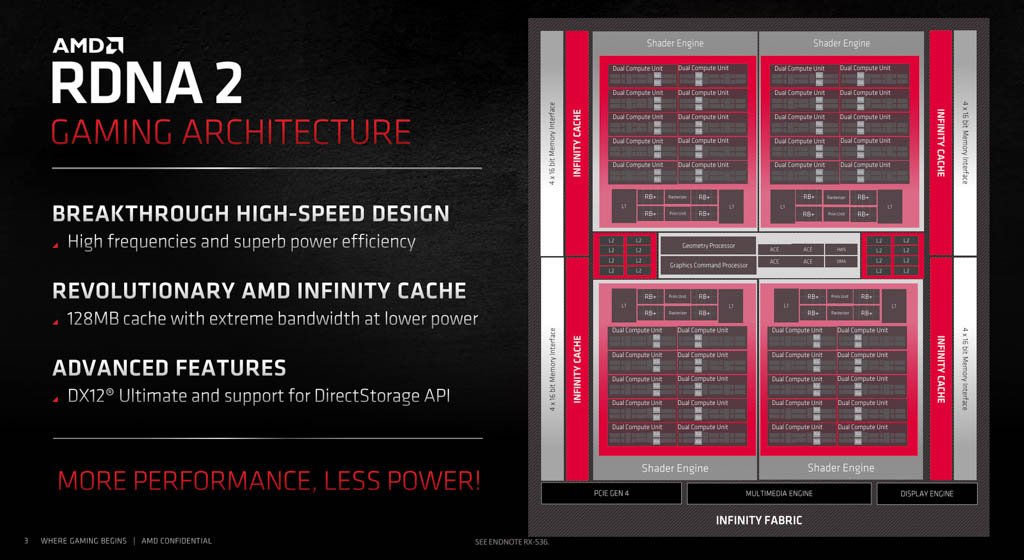
AMD’s RDNA2 architecture, also known as Big Navi, is essentially the next evolution of RDNA introduced with the Radeon 5000 series. It still uses a 7nm lithography while becoming more efficient than its predecessor. Their new generation GPUs are also boasting GPU clock speeds well beyond the 2000MHz mark, which should deliver faster performance across the board.

Overall, AMD is promising up to 54% gain in performance-per-watt thanks to clock enhancement, frequency increase, and varying optimizations.

The AMD Radeon RX 6600 is still based on the Navi 23 GPU like its bigger brother, the RX 6600 XT. It is designed for the mainstream market to perform at 1920 x 1080. The RX 6600 itself is slightly cutdown from the XT version sporting 1792 stream processors, 28 Compute Units, and 28 Ray Tracing Acceleration Cores. It does preserve the 128-bit 8GB GDDR6 memory but TDP is placed slightly lower at 132W.

One of the solutions that AMD implemented on RDNA2 is the usage of the Infinity Cache. Not to be confused with the Infinity Fabric found on their CPUs, Infinity Cache on the RX 6600 uses a 32MB cache on the die itself in order to bridge the size between of the VRAM and the traditional L2 cache found on GPUs. This allows for better bandwidth, lower latency, and faster memory access.
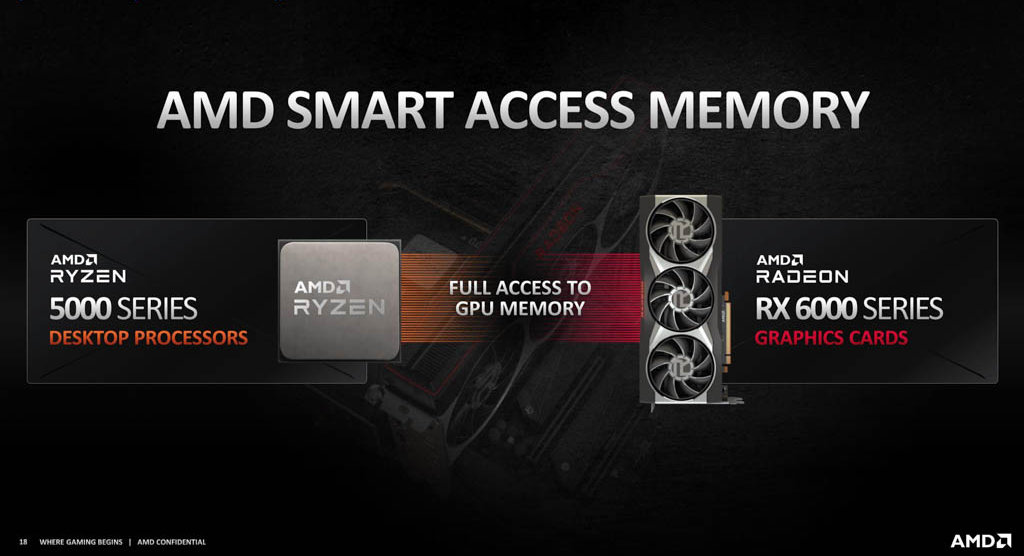
Transfers between the CPU and GPU are normally limited to a 256GB chunk. AMD’s Smart Access Memory (SAM) combines the memory of the CPU and GPU to increase that limit to reduce buffering and latency. AMD claims that SAM provides up to 10% of additional framerate to games but this increase is much more noticeable to higher resolutions.

Big Navi will officially support ray tracing in games albeit in a lesser extent compared to the competition’s latest offerings. AMD is implementing dedicated RT cores on RDNA2-based GPUs in order to improve performance of ray tracing effects
Fidelity FX Super Resolution, otherwise known as FSR, is AMD’s answer to NVIDIA’s DLSS technology. It lowers the render resolution of games to improve performance and then upscales the image to the target resolution using algorithms to put the quality almost on-par to the native resolution.
The FSR upscaling algorithm analyzes the source image at the anti-aliased input resolution and then recreates it at the target resolution. A sharpening pass improves the image quality by enhancing texture detail.
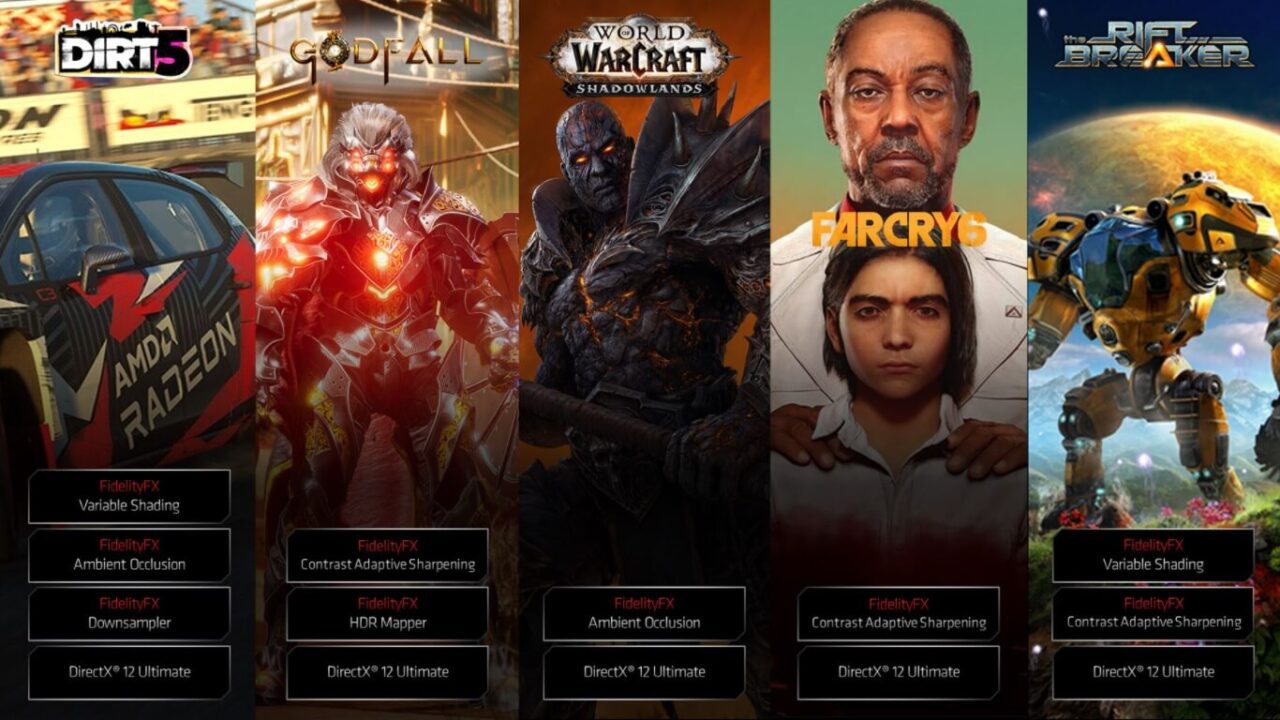
The result is an upscaled image with higher quality details compared to basic point or bilinear upscaling. AMD says that image quality is near-indistinguishable at Ultra Quality mode while performance in games is increased by up to 2.4x at 4K at Performance Mode. At this time, FSR is supported by around 50 games and engines including Deathloop, Far Cry 6, Godfall, DoTA 2, and more games are on the way.

The Gigabyte Radeon RX 6600 Eagle is rather lengthy – around 282mm – for a budget-oriented card. It is clad in a gray colorway throughout only highlighted by blue hues with the Eagle branding on the shroud and white by the Gigabyte logo at the side. It is on the thin side as well only taking up 2 expansion slots on cases, making it a viable card for small formfactor builds.
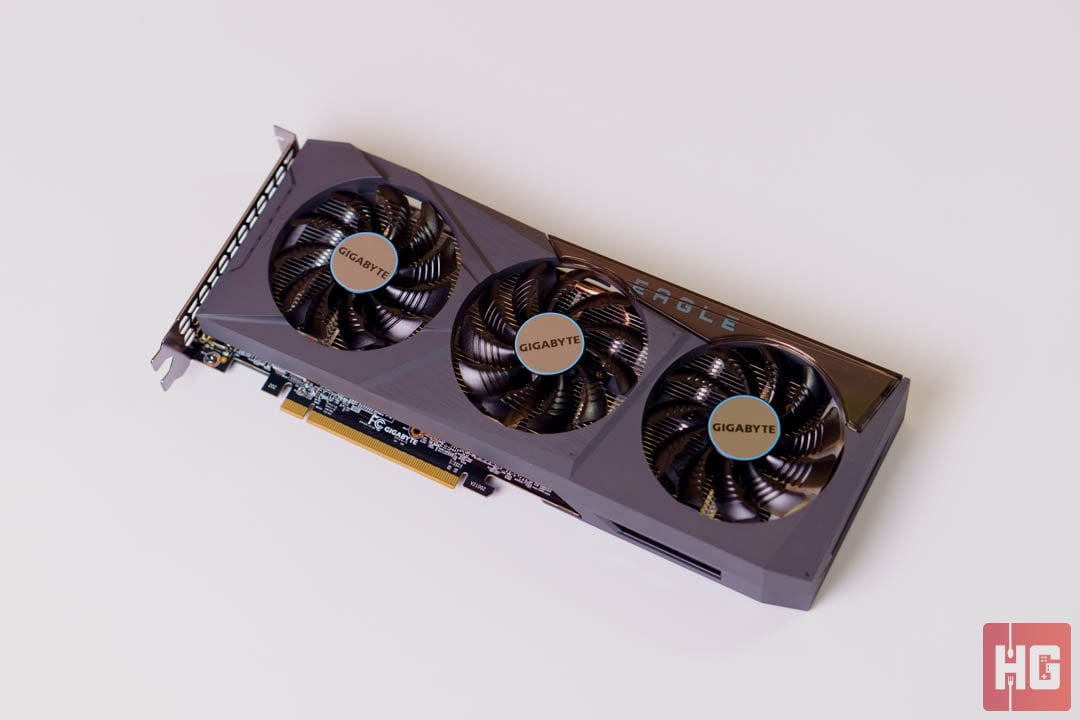
The card comes with Gigabyte’s Windforce 3x Cooling System. The heatsink itself extends further than the PCB and three fans cool down the GPU and its components. The two side fans rotate counter-clockwise while the center fan spins clockwise in order to reduce turbulence and increase airflow pressure for better cooling performance.
The card does support passive mode, which means that the fans will not spin until the GPU reaches around 60°c. This can lead to a completely silent experience at idle or low GPU loads.
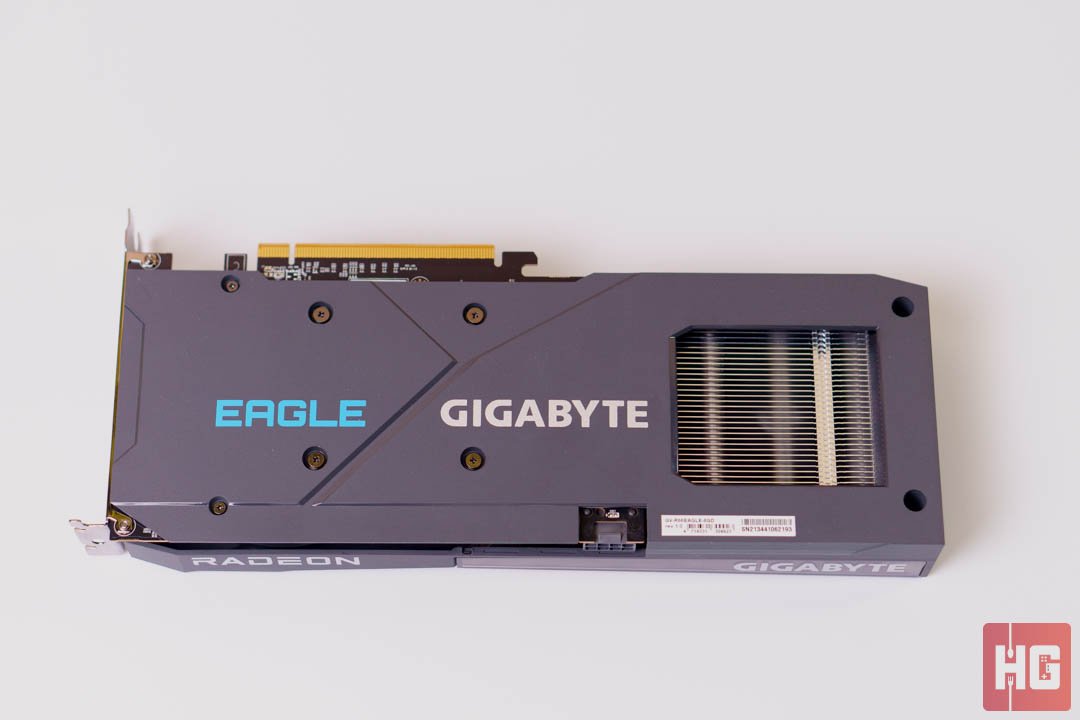
The backplate is made out of plastic and does not offer passive cooling for the PCB. It is rather nice to look at with a matte finish and the Gigabyte and Eagle branding embossed on it. There is also a large cutout near the end to prevent air from being trapped.
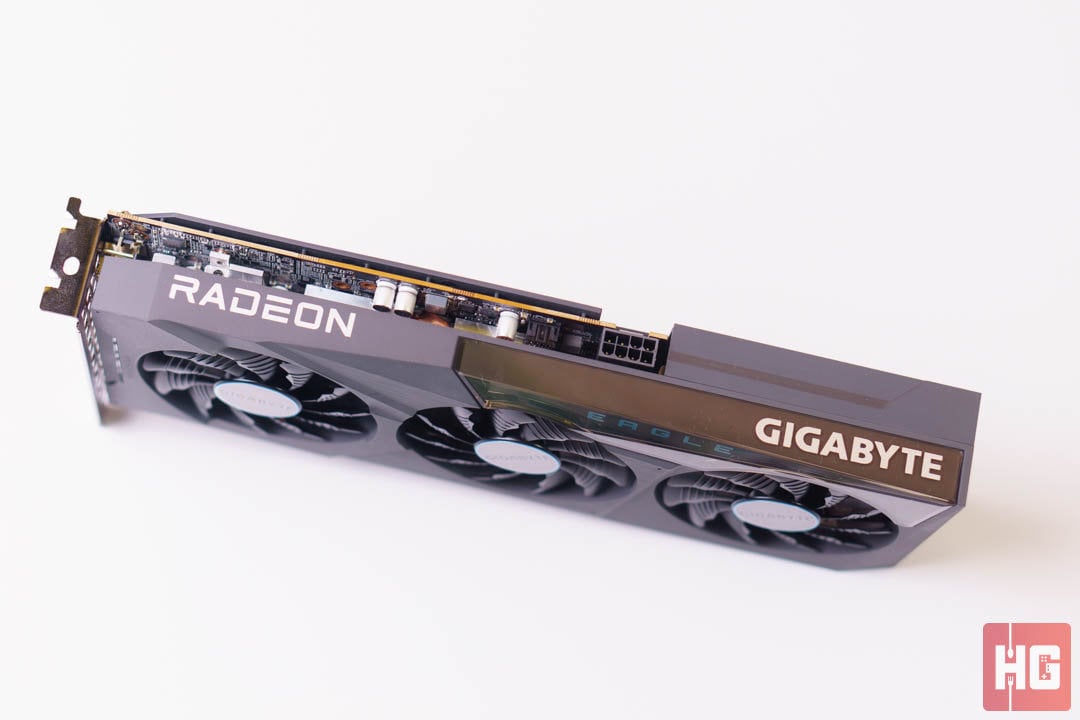
The Gigabyte Radeon RX 6600 Eagle has a thin profile at around only 41mm. It is powered by a single 8-pin PCIe connector. The brand recommends using a 500W PSU to power the card since it does have a 132W TDP.
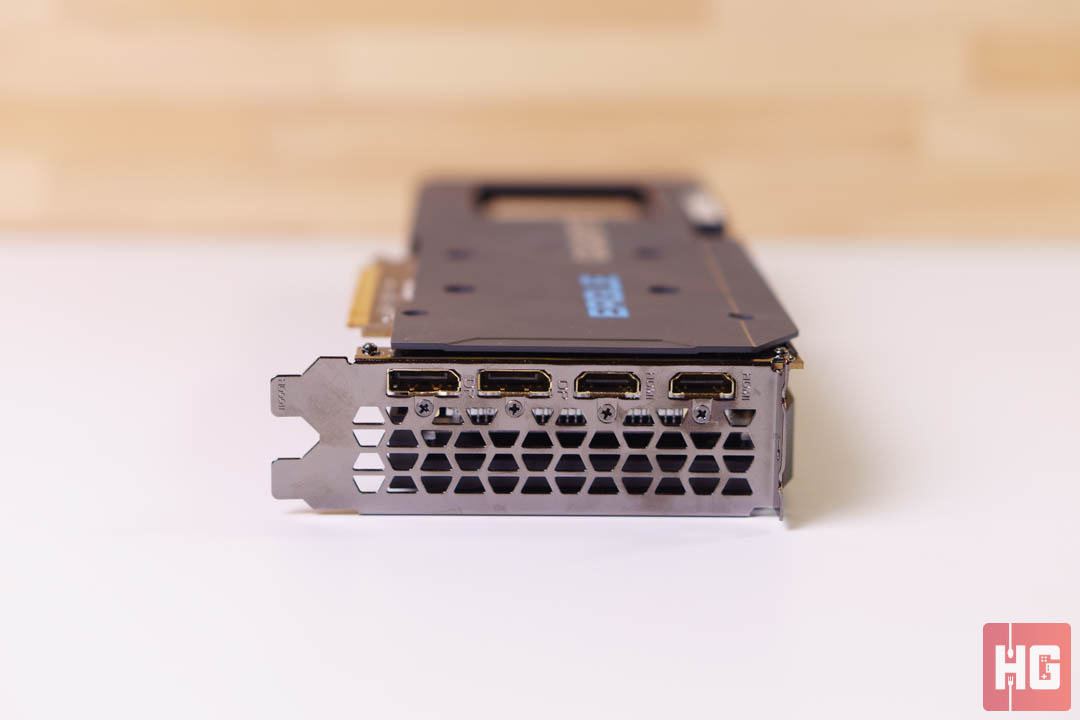
Checking the back reveals a vanilla selection of display connections which includes: two DisplayPort 1.4a and two HDMI 2.1.
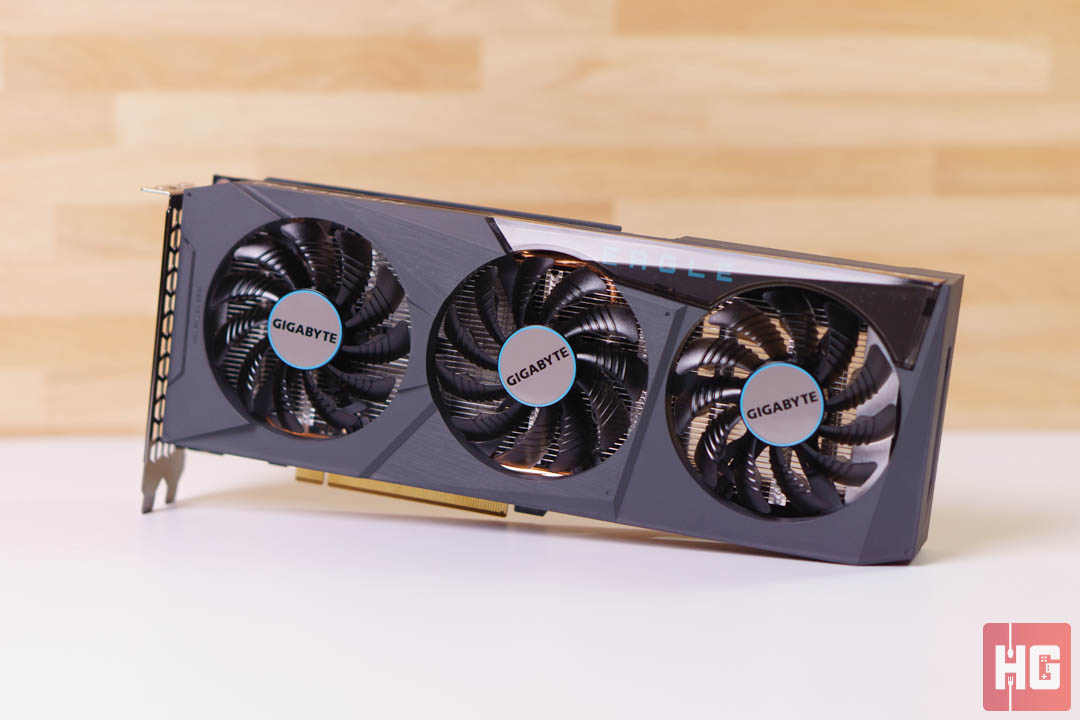
The Gigabyte Radeon RX 6600 Eagle will be put to the test with synthetic benchmarks and games running various APIs including DX11, DX12, and Vulkan at 1920 x 1080, 2560 x 1440, and 3840 x 2160. Ray Tracing will also be included in supported games although exclusive features such as DLSS, FSR, Hairworks, and others will be left off.
Components for testing the card include the following:
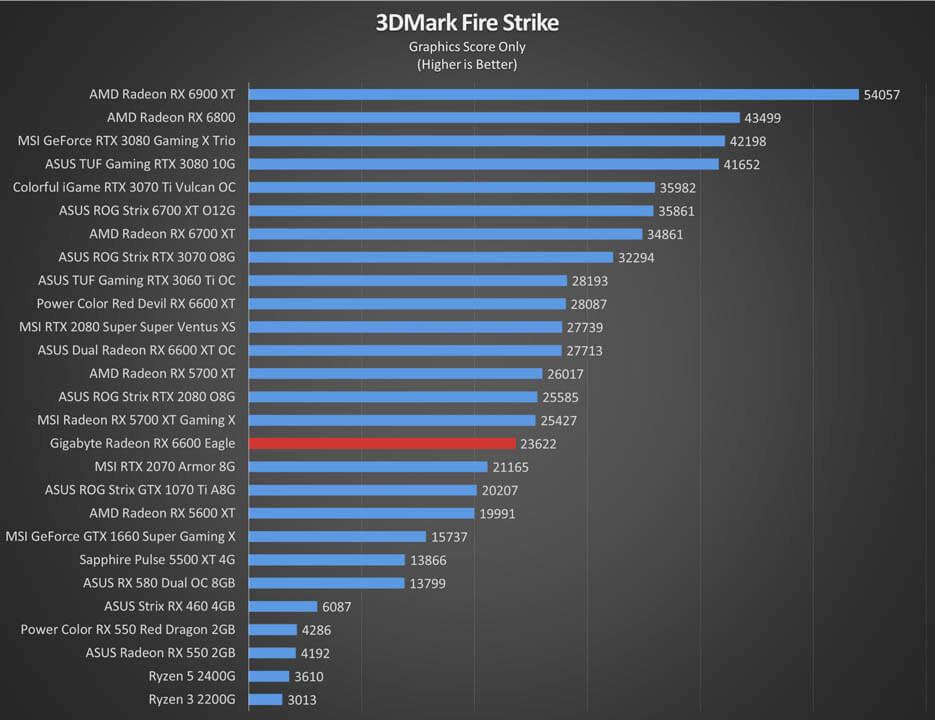
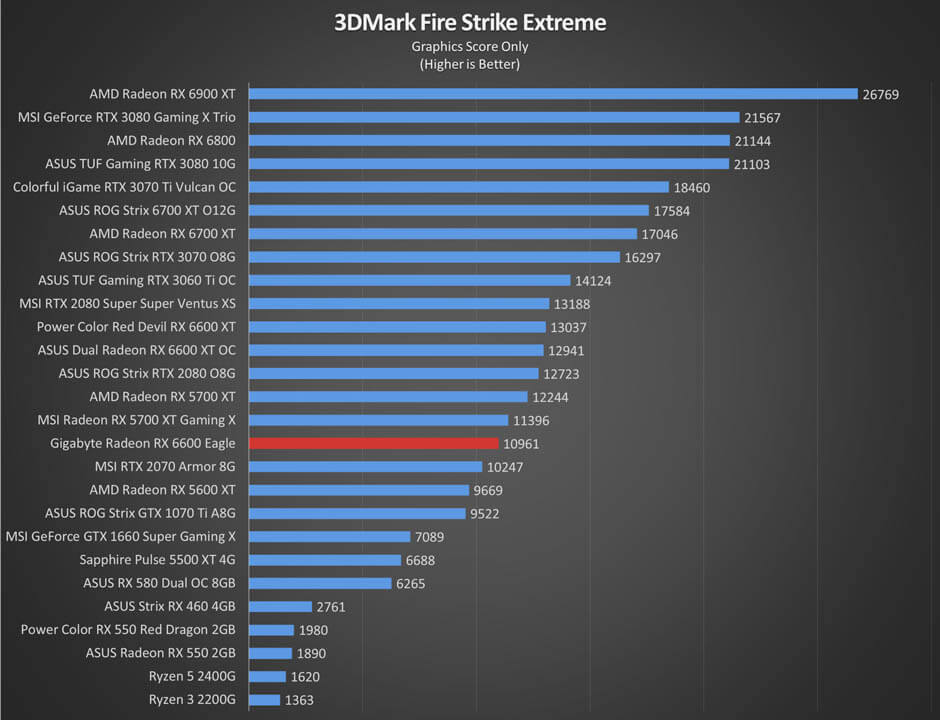
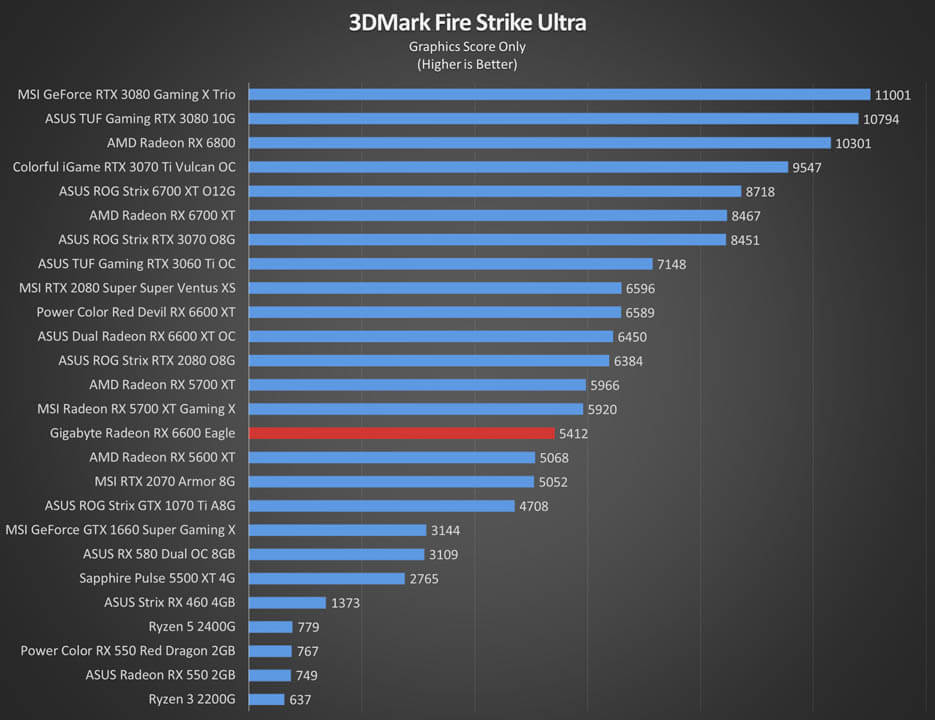
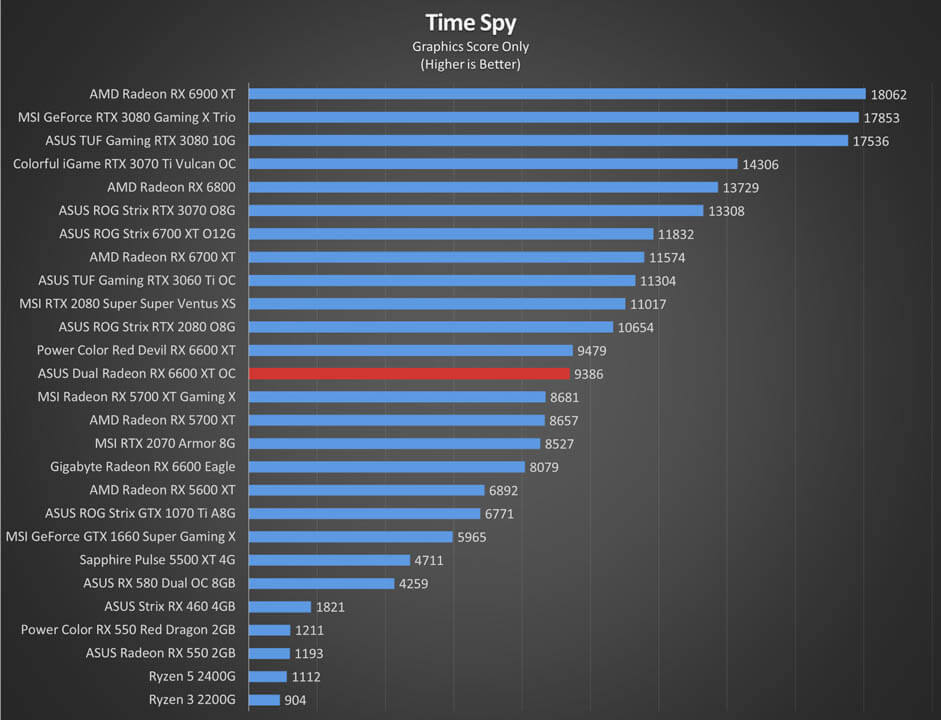
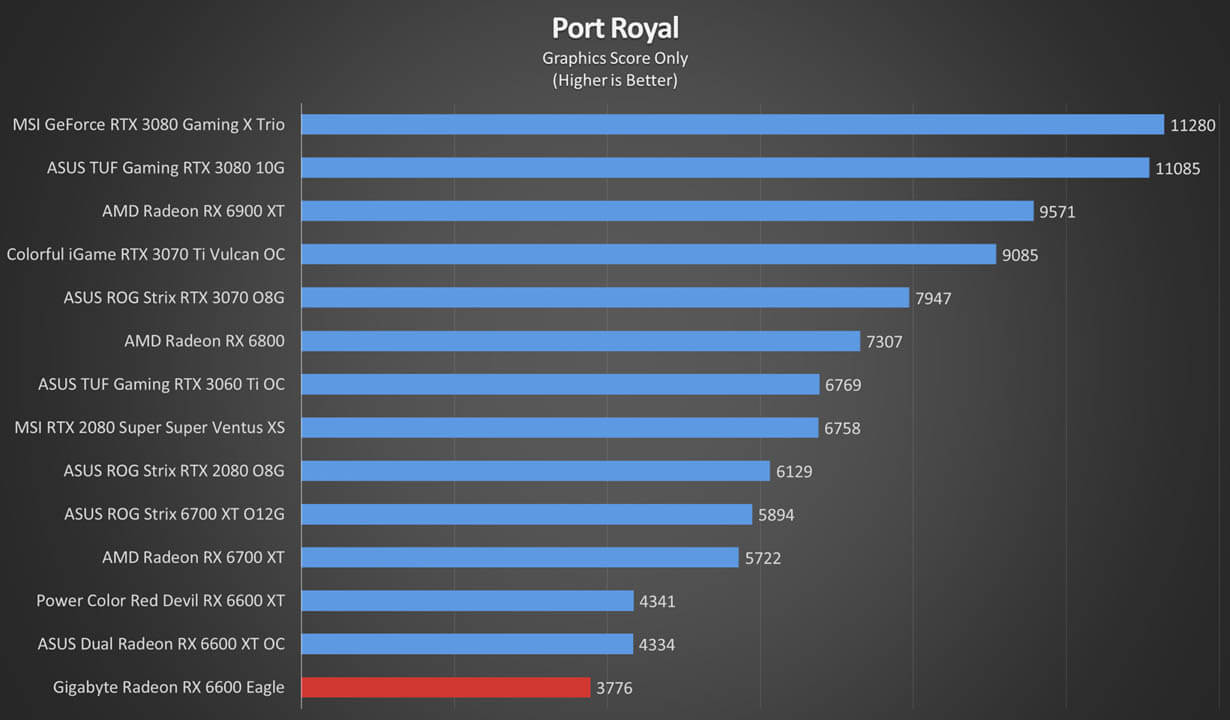
The AMD Radeon RX 6600 places in the middle of the pack in terms of DX11 and DX12 synthetics. It manages to beat last generation’s 5600 XT by around 13% on average and even supersedes the RTX 2070 by a hair. It does place behind by 15% in comparison to the XT model.
The RX 6600 places last in ray tracing synthetics in Port Royal as expected. Ray tracing isn’t AMD’s strong suit as this is the first generation that fully supports the feature.
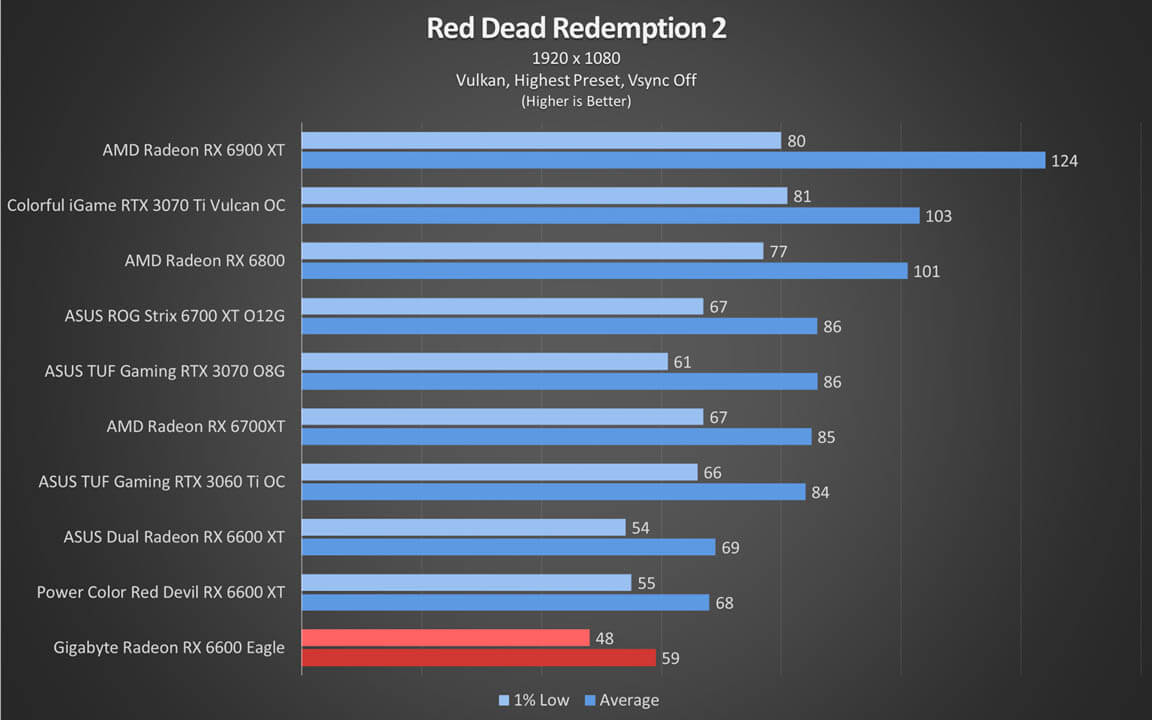

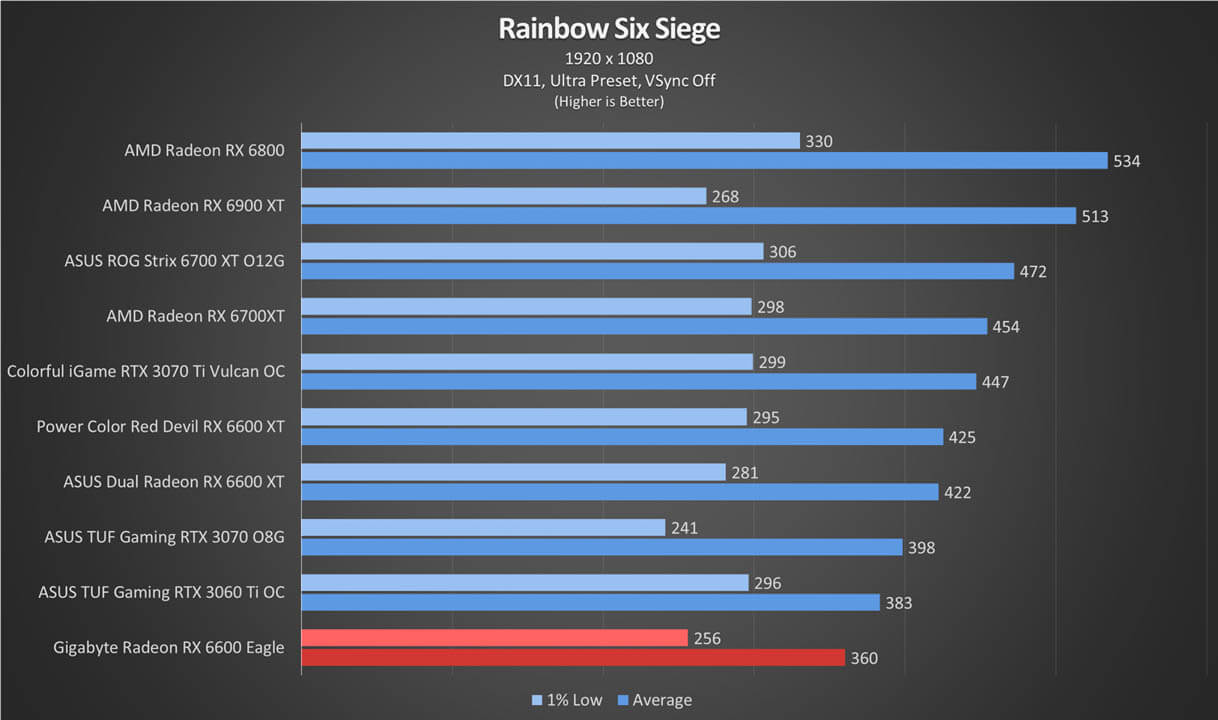



The RX 6600 shines at 1080p. Most Triple A games will be able to run at 60fps if not more. Older graphically intensive games will enjoy more than 80fps while more competitive titles will easily reach more than a hundred fps which will take advantage of high refresh rate displays.
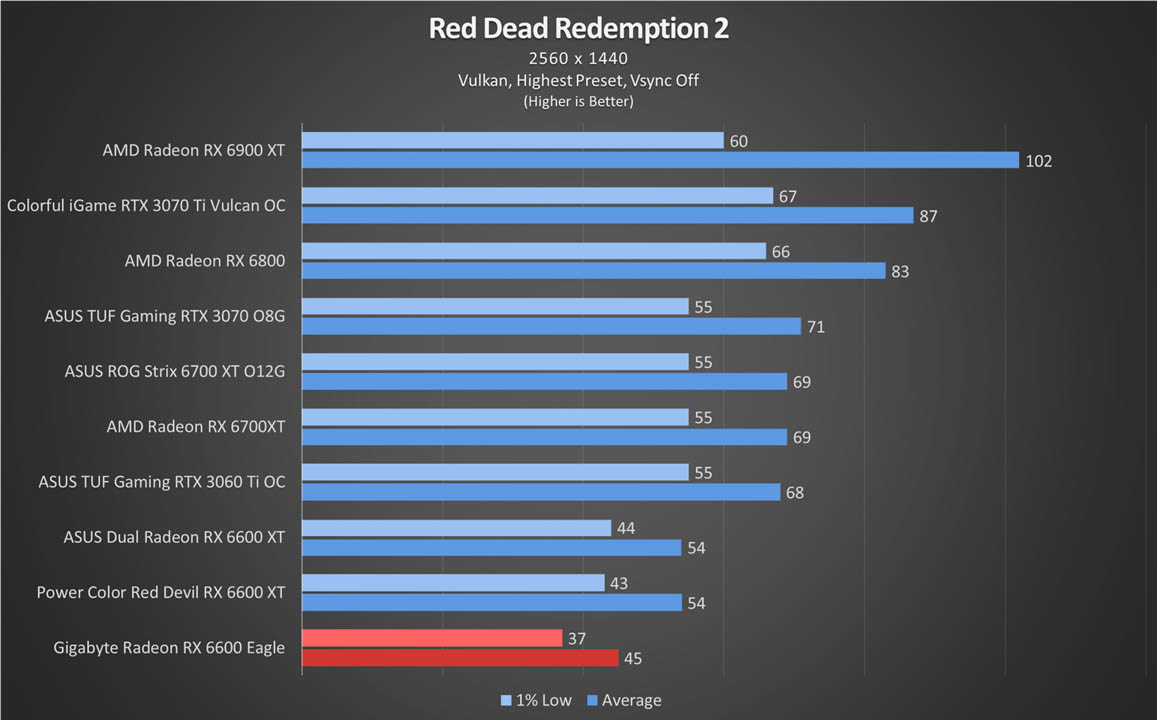


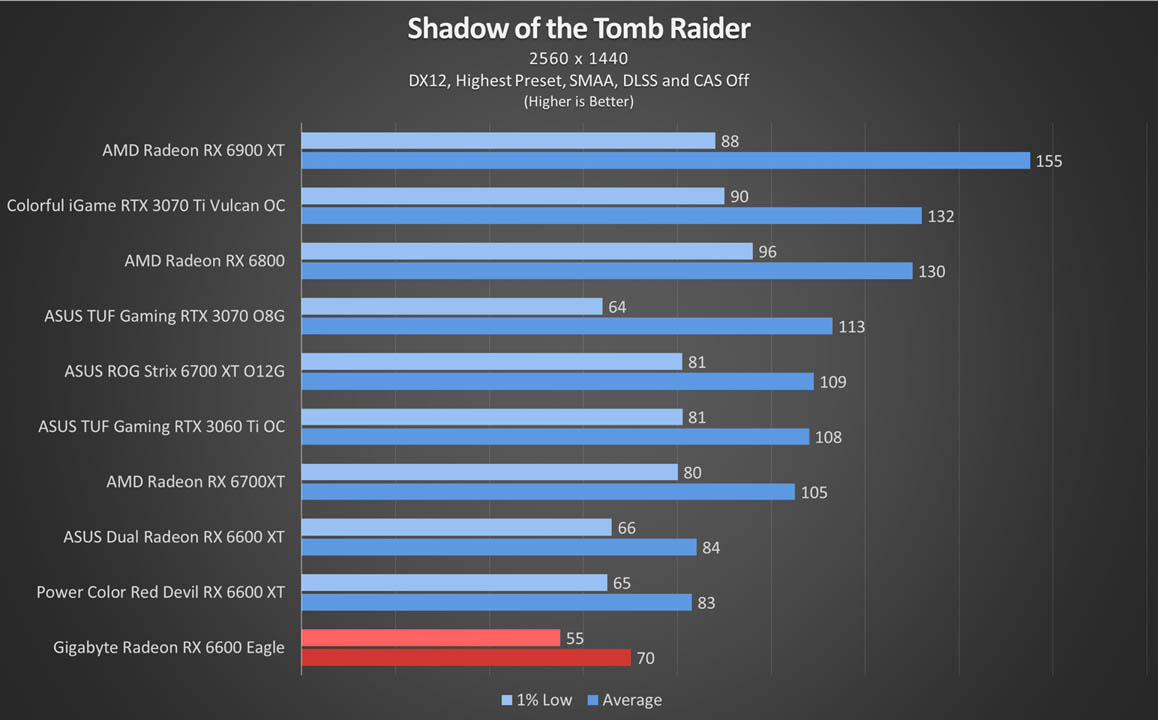


The card struggles a little bit at 1440p. Graphically intensive Triple A games will still run smoothly but might wrestle a bit to reach 60fps. Lighter games will still enjoy high FPS like Rainbow Six Siege.u
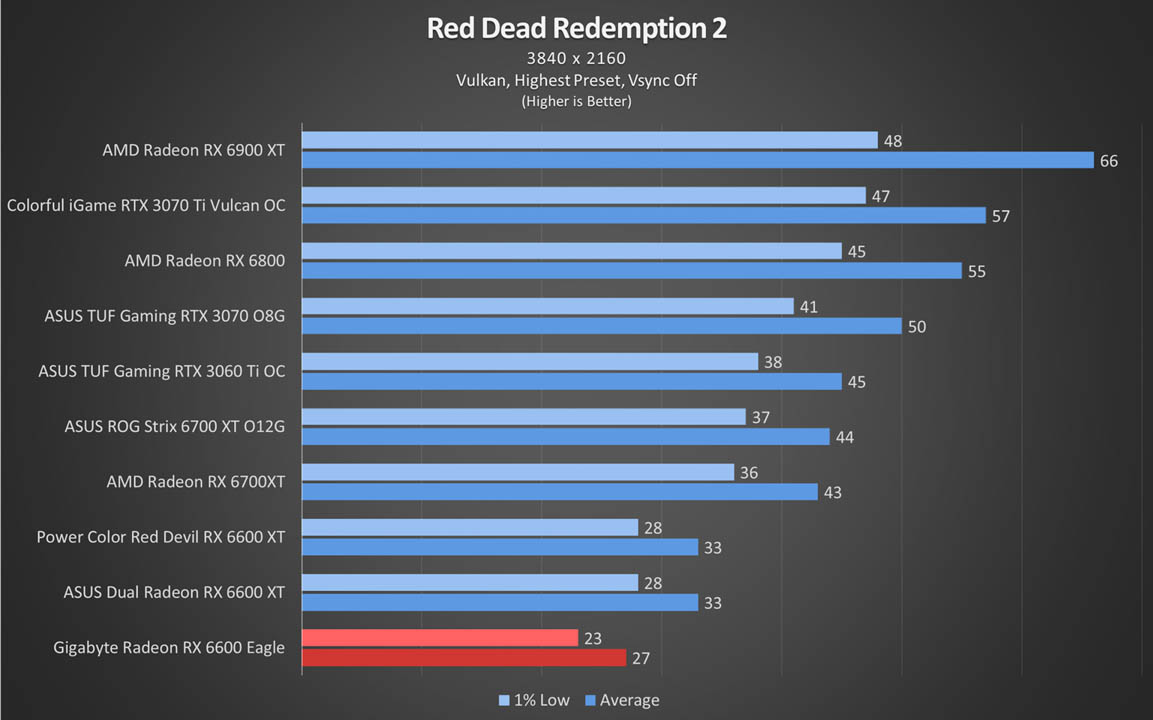
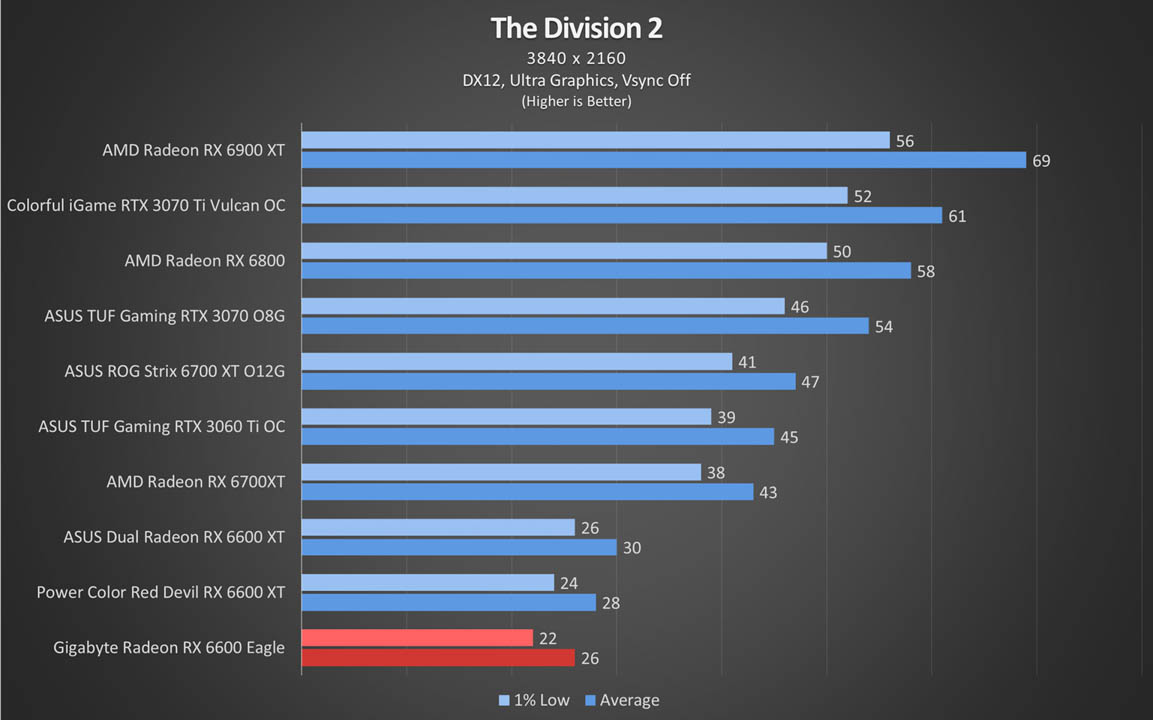


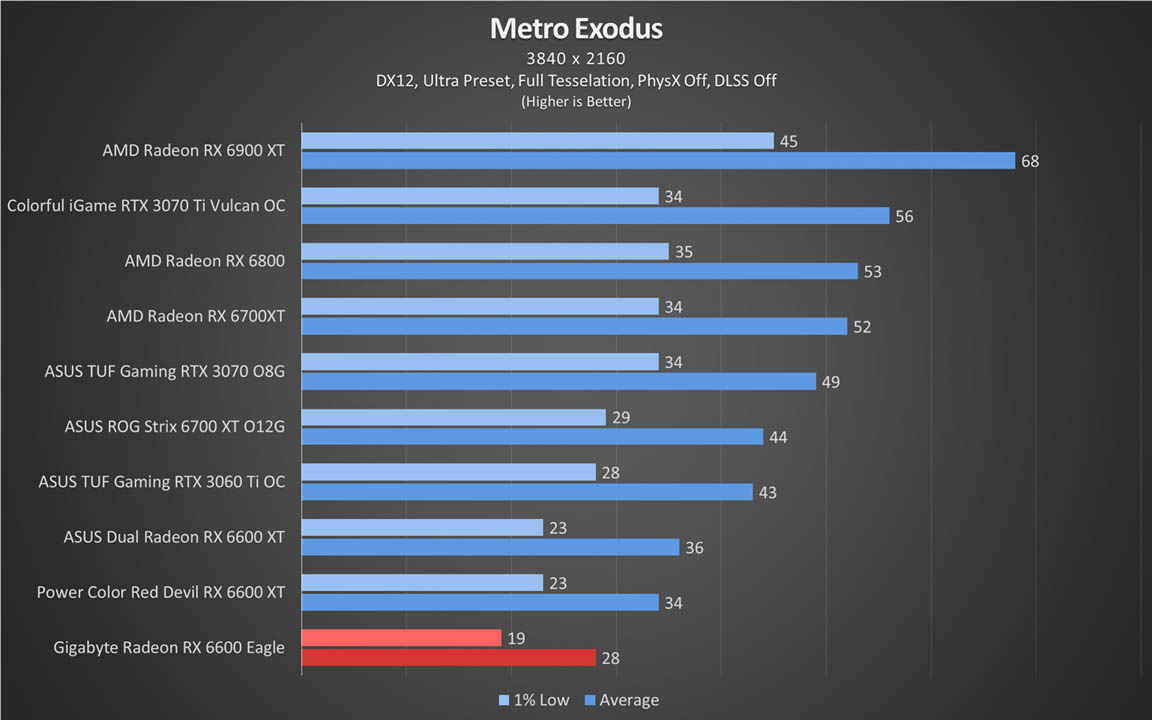
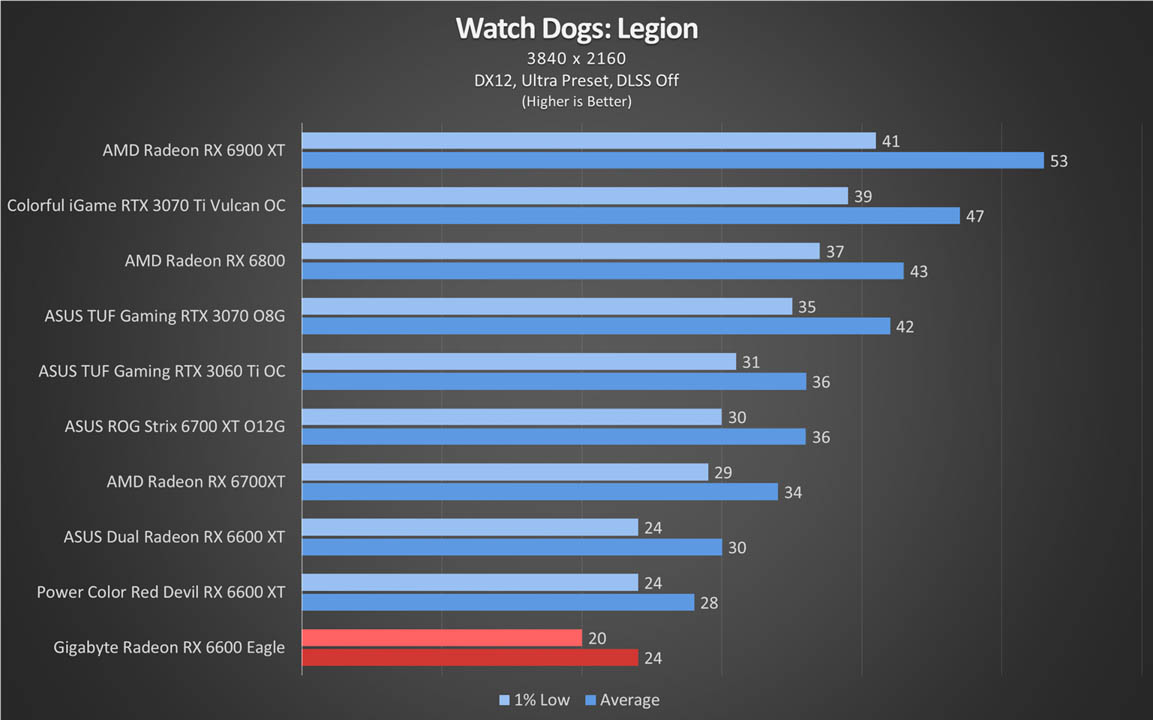
Running games at 3840 x 2160 will really put a strain on the RX 6600. It barely reaches 60fps on Triple A games and mostly rests in the 30fps mark. More lenient games will still run at a high FPS but that’s to be expected.

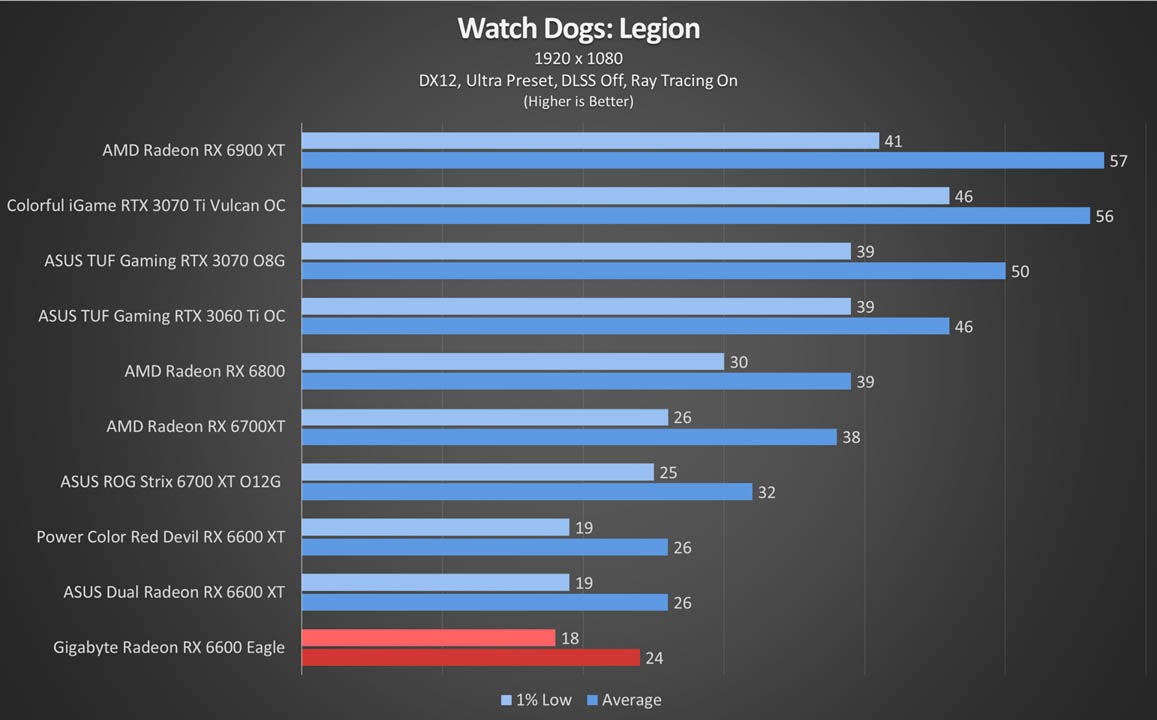
Ray tracing is still feasible for the RX 6600 at 1080p. You will most likely need to back off some of the settings as the card struggles to get a smooth 60fps on games that have ray tracing.

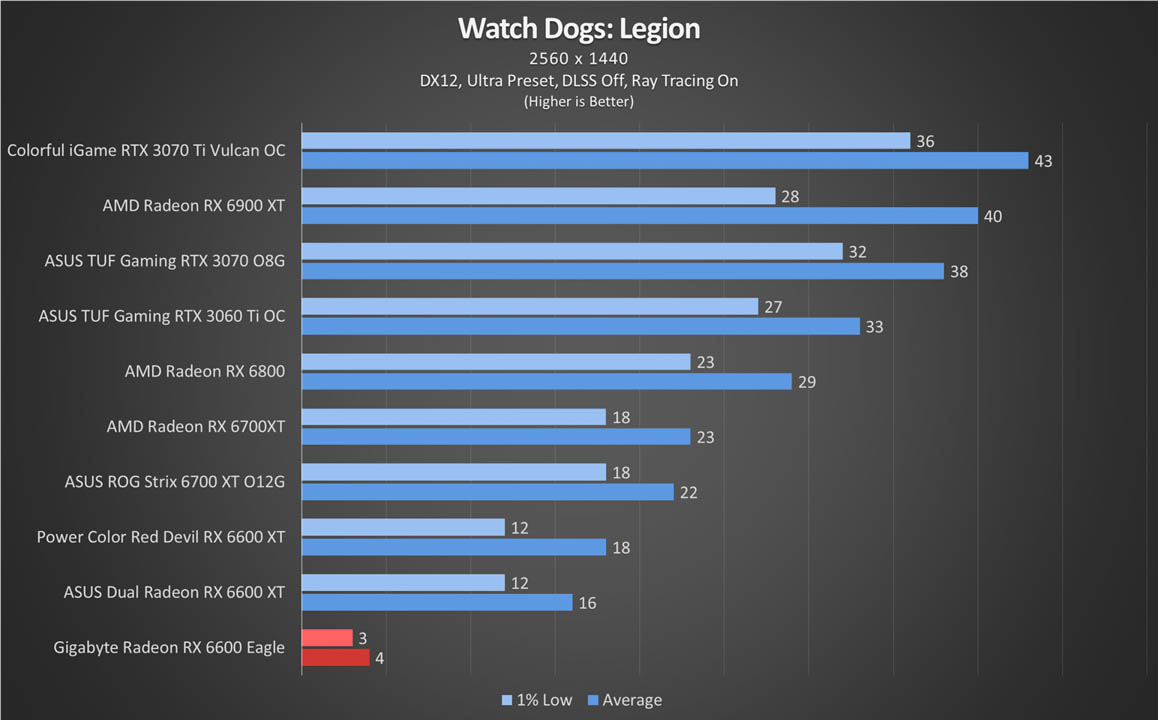
Ray tracing performance at 1440p for the RX 6600 is nearly unplayable with all settings turned on. Its worst showing is on Watch Dogs Legion where it basically turns to a slideshow at 4fps on average.

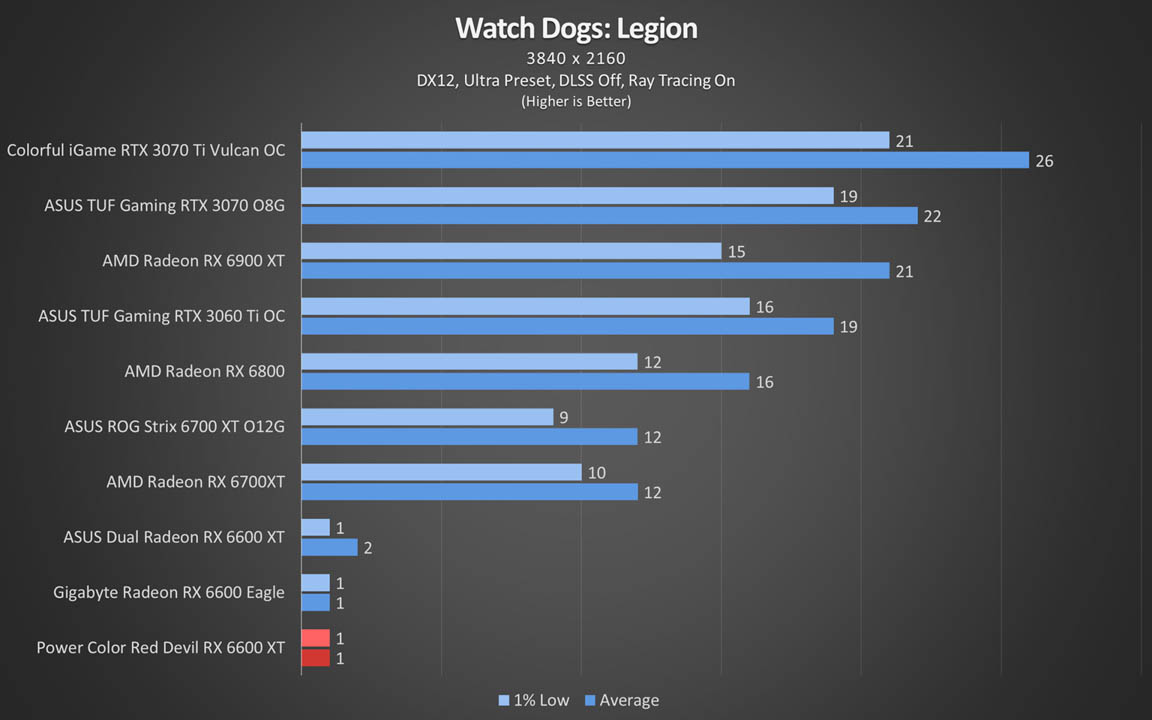
2160p ray tracing is, well, impossible. Both Metro Exodus and Watch Dogs Legion turn into slideshows. We suggest not running ray tracing at this resolution unless you want to turn all the graphical settings down to get some kind of playable framerate.
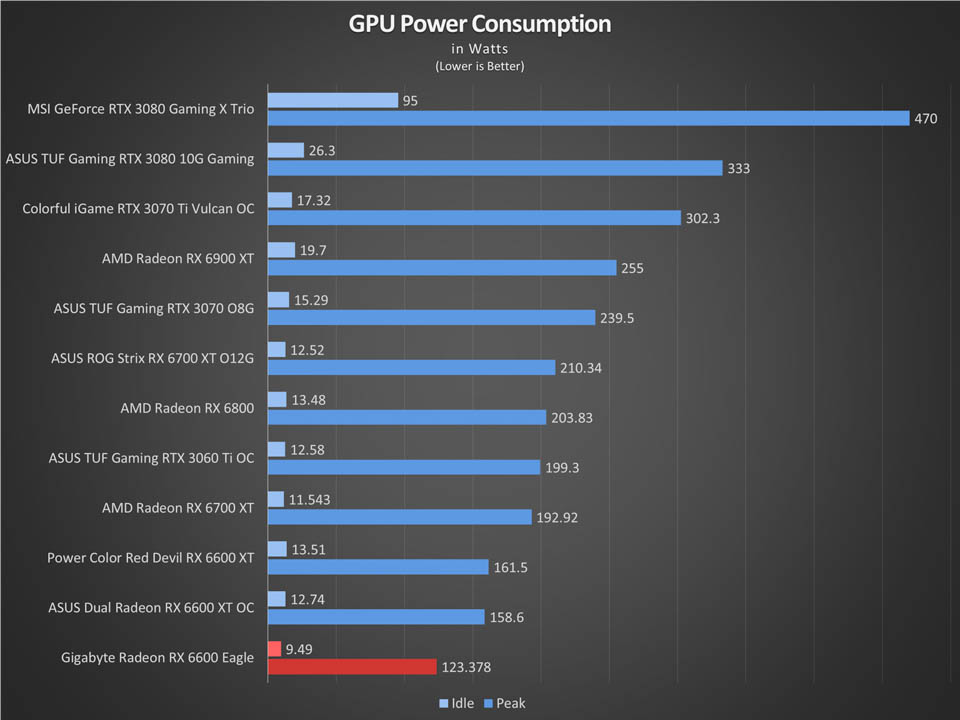
The AMD Radeon RX 6600 does have a low TDP of 132W – 28W less than the RX 6600 XT. This leads to a lower power consumption at around 123.38W under full load and just below 10W at idle.
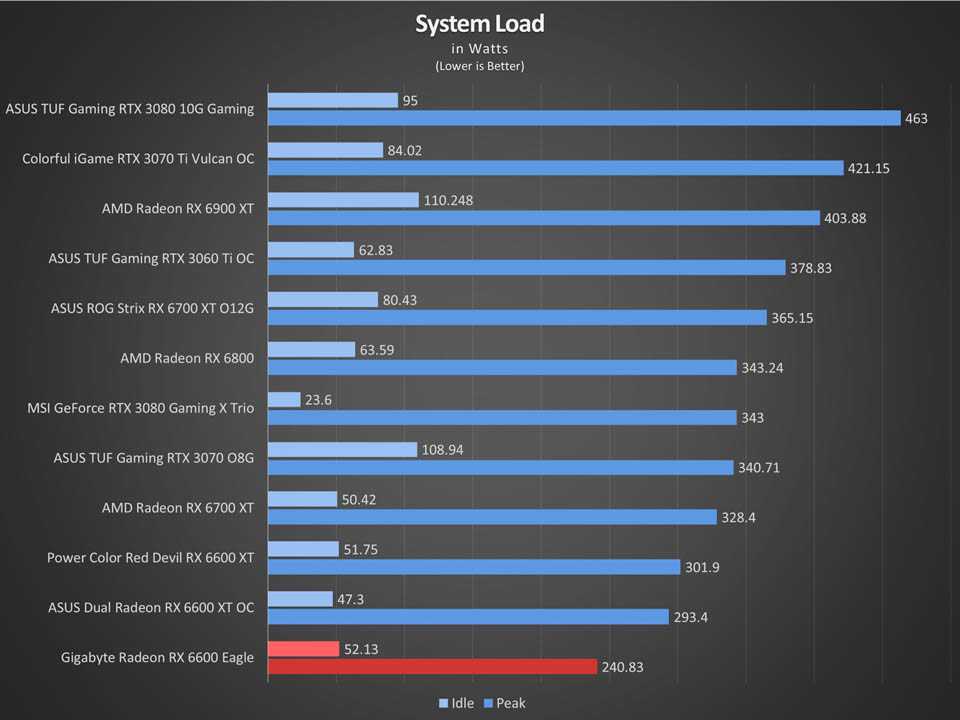
Total power consumption for our test system is set at around 240.83W at full load, which means that decent 300 – 400W PSUs will be able to run the card comfortably with a bit of headroom to boot for the latter.
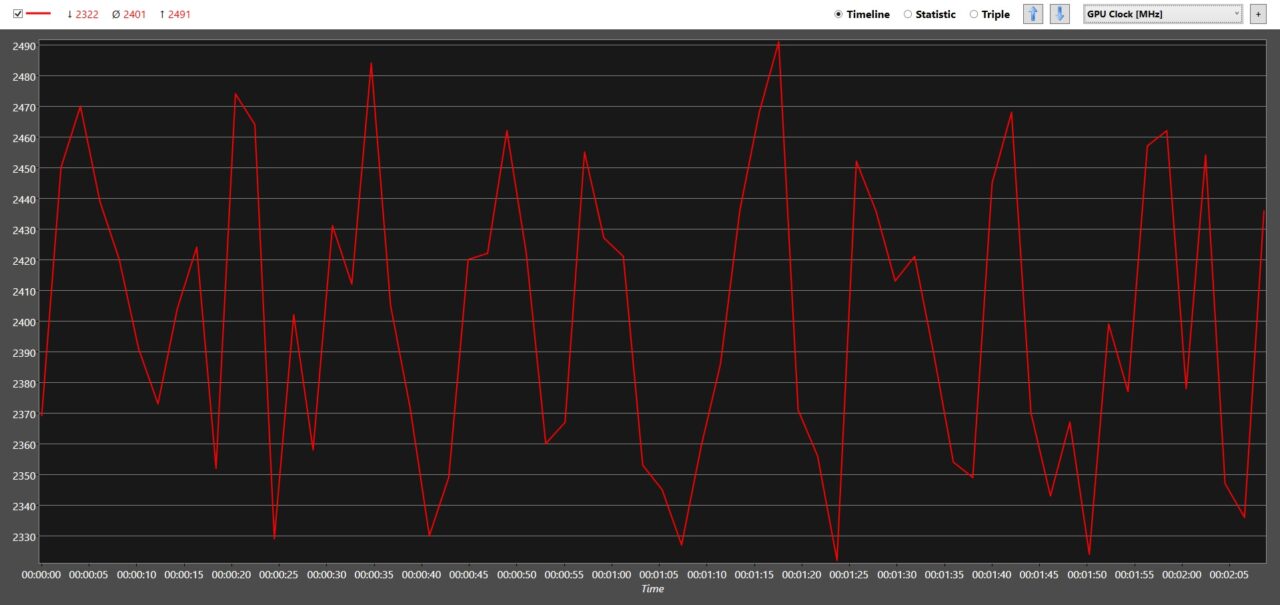
AMD promises up to 2491MHz Boost Clock for the RX 6600 and it seems they have made true to that promise. The card bounces between 2322Mhz to 2491Mhz under maximum load for an average clock speed of 2401Mhz within the run. Since the card also has low temperatures, there is no thermal throttling at all.

The lower power requirements of the card also lead to cooler thermals. The longer heatsink and triple fan arrangement of the Gigabyte Radeon RX 6600 Eagle admirably cools the Navi 23 GPU resting at an average of 59°c only peaking to a rather low 60°c at full load. The card can also work silently at 43°c without the fans spinning.

The AMD Radeon RX 6600 poses as a strong contender at 1080p. It can easily run any games at more than 60fps at times and can even deliver decent ray tracing performance despite AMD’s lagging performance compared to the green team.
It does have a 15% deficit in performance compared to its RX 6600 XT. The RX 6600, however, does come cheaper at USD 329 compared to the USD 370 price point of the latter. This might make it a more affordable 1080p card for cash-strapped gamers especially with GPU prices skyrocketing thanks to the global chip shortage.

Gigabyte’s adds to the formula a pretty solid set of features, which includes solid cooling thanks to the Gigabyte Radeon RX 6600 Eagle’s triple fan arrangement and a large heatsink that extends way past where the PCB ends.

Overall, the Gigabyte Radeon RX 6600 Eagle offers a pretty solid value and performance for the 1080p gamer, which is why we are giving it our seal of approval. Those who are looking for a slightly more affordable upgrade for an older card may want to check out this variant of the RX 6600.
The AMD Radeon RX 6600 and the Gigabyte Radeon RX 6600 Eagle are now available at a starting price of USD 329 or around PhP 17,000 when converted directly. Pricing and availability in the Philippines are yet to be announced but we expect to receive word from the brand soon.
